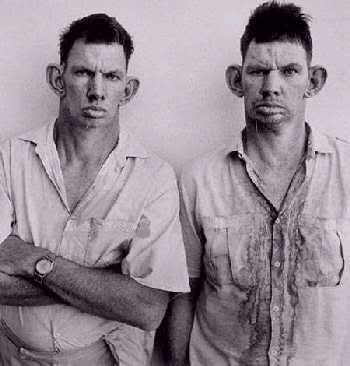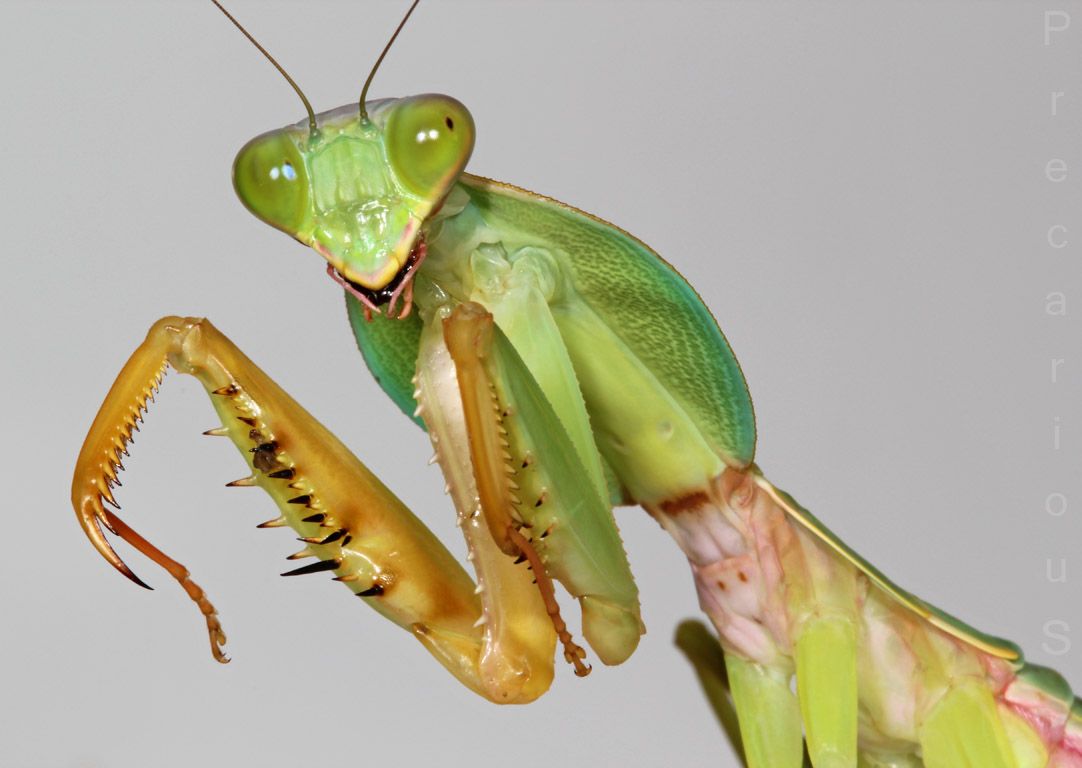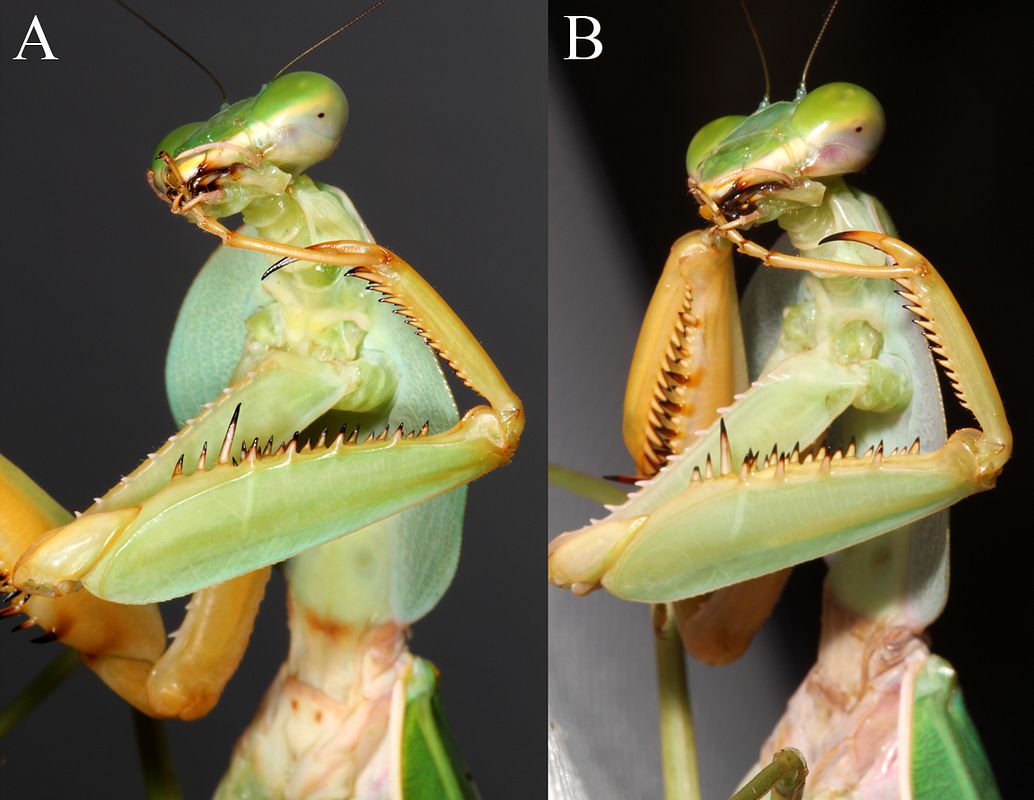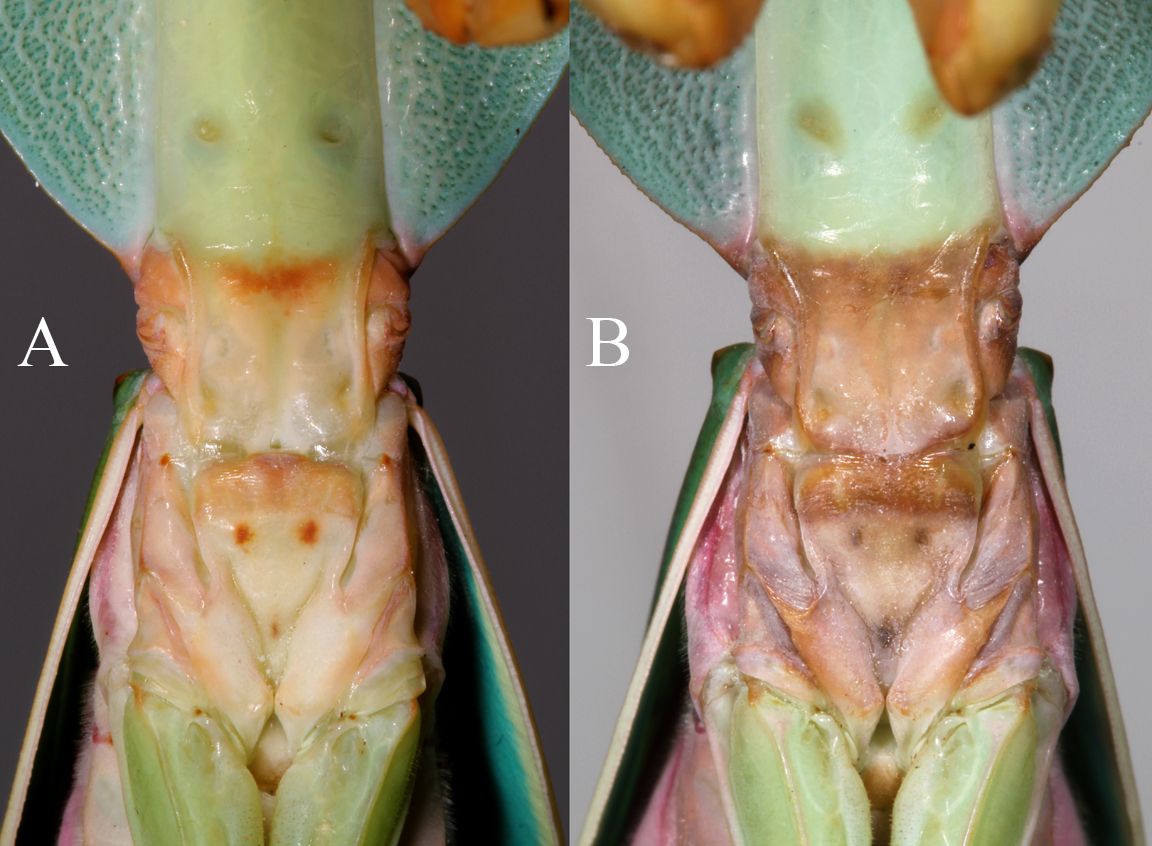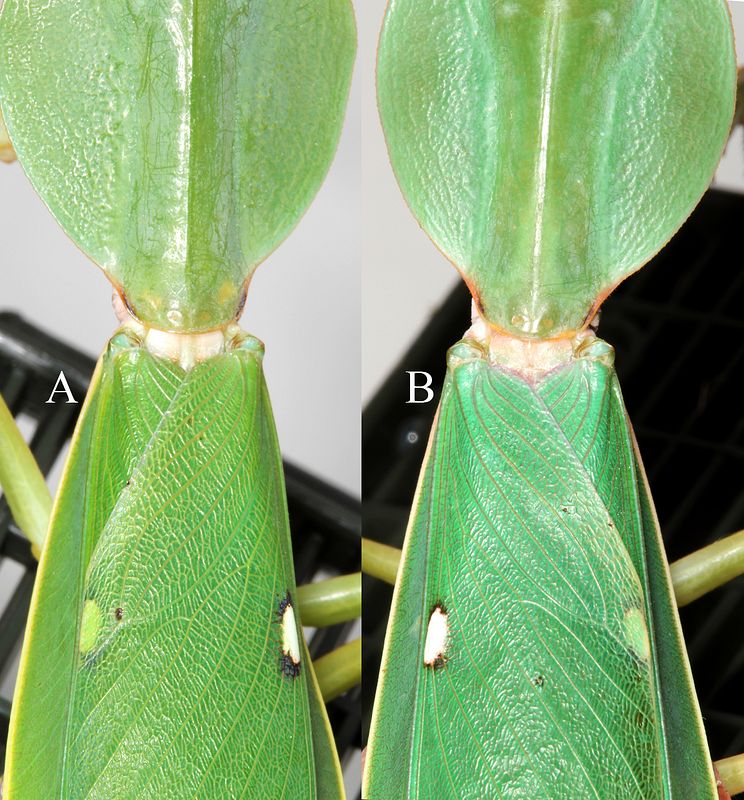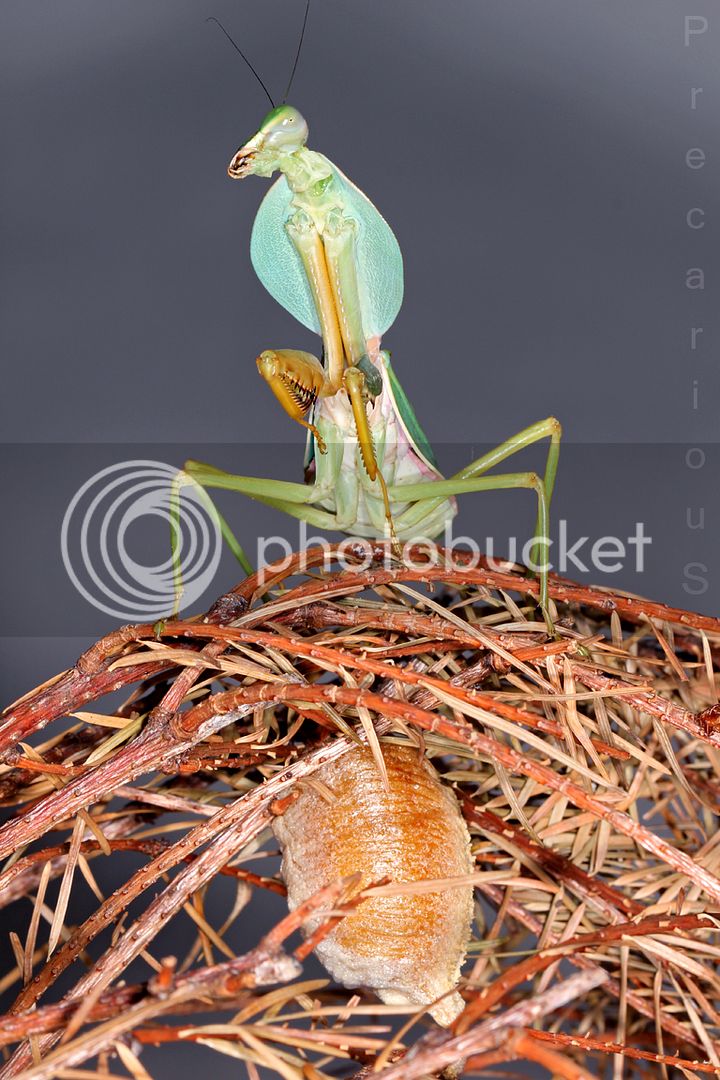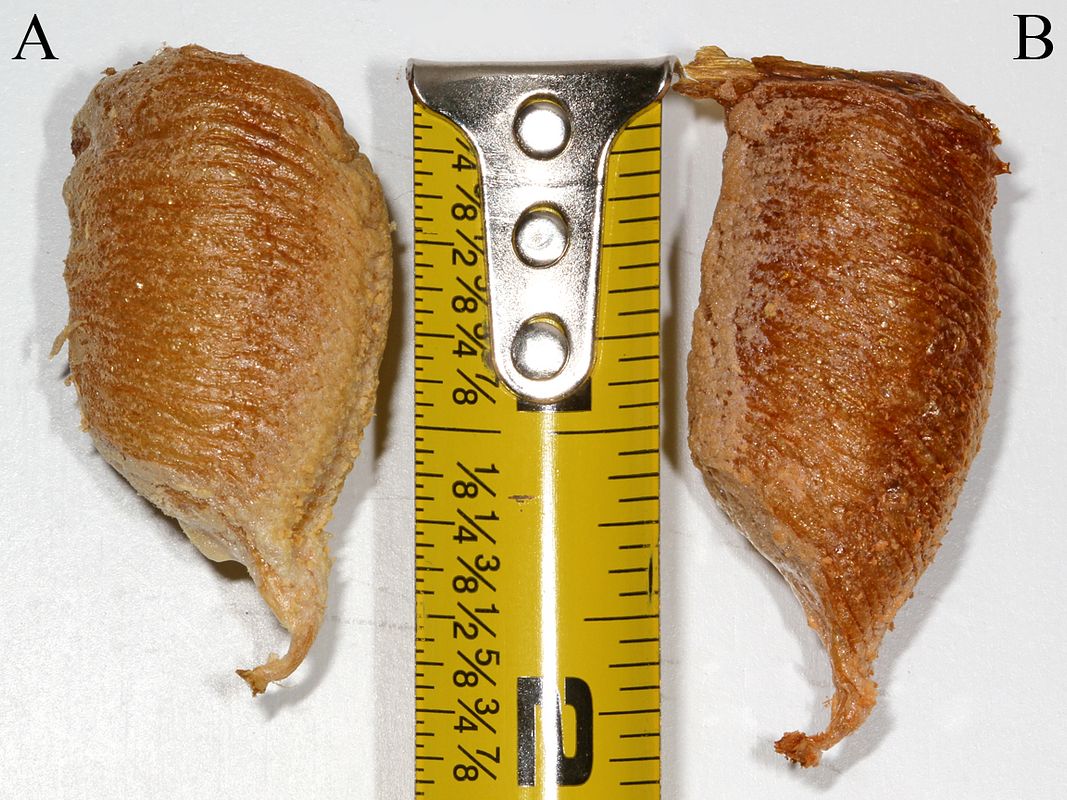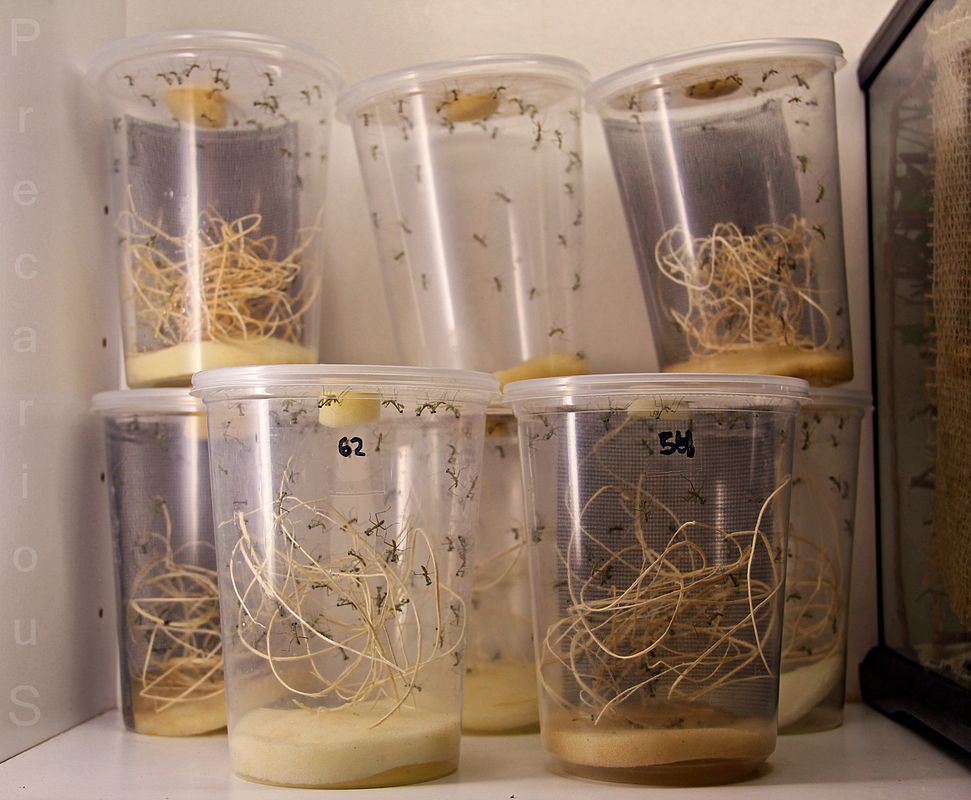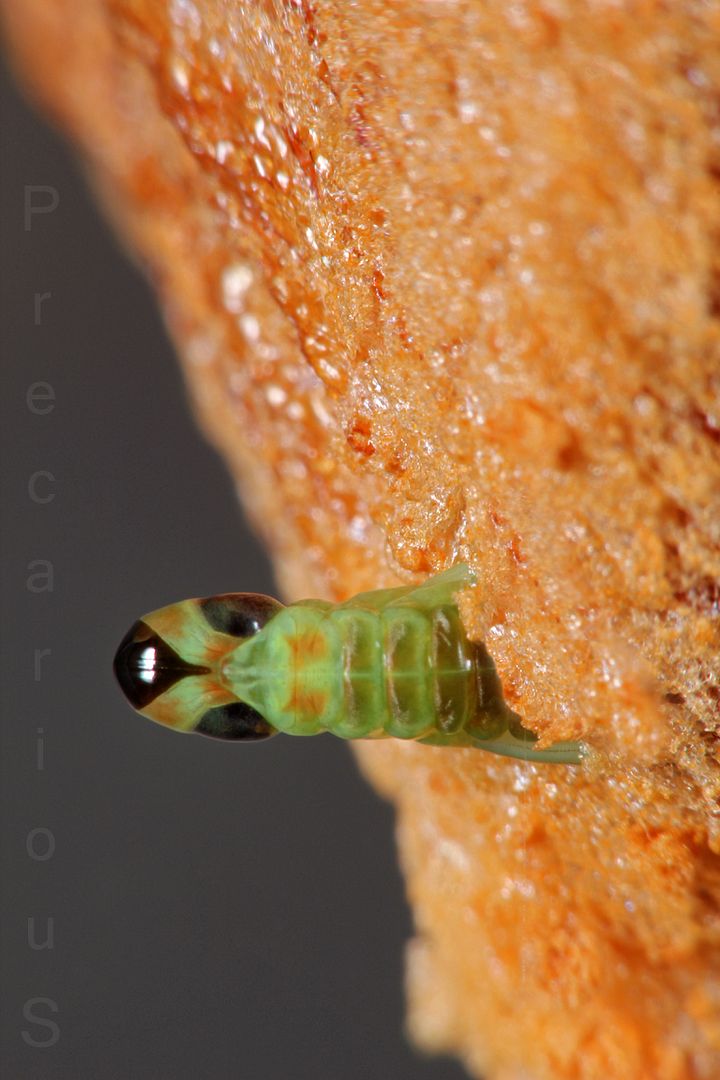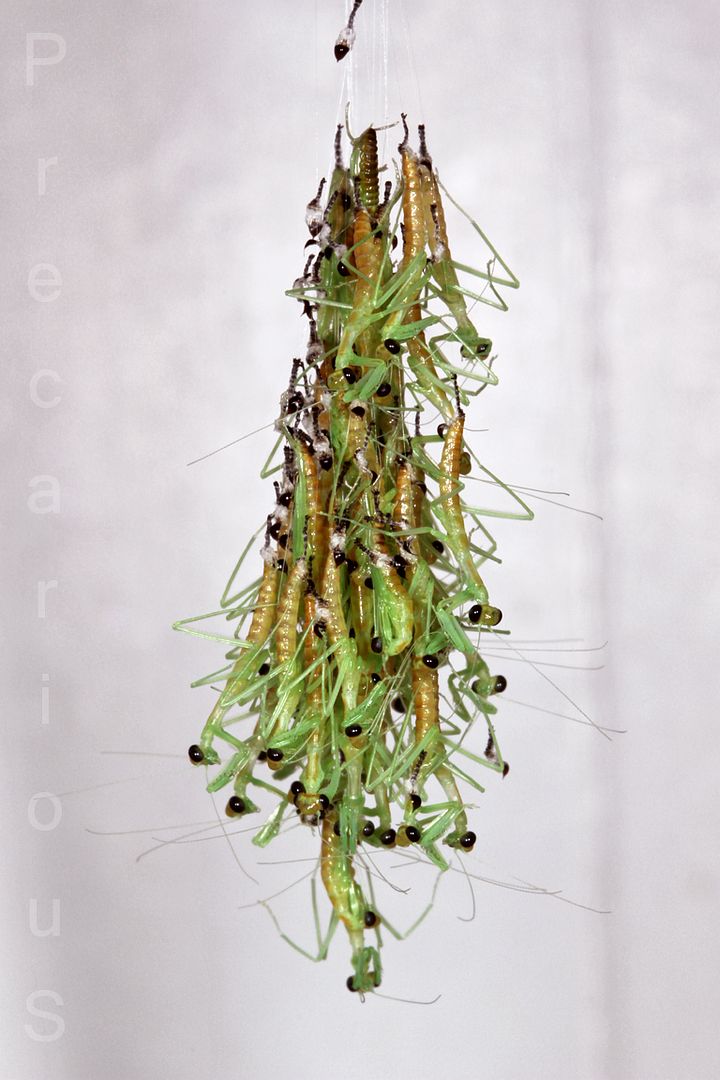Hi Henry: Please don't sell your Mystery shield mantids under an unqualified binomial like Rhobodera valida, R. stalii or R. longa. Here's why:
Very often, insect hobbyists make species identifications in the field without sending them off to a museum or university. We have two great aids in doing this. We can compare our specimen with numerous reliable pix on the internet and in books. We can eliminate a lot of species because they don't occur in our locality. I always use this as a "pre scan". For example, I recently caught a gray hairstreak; I am always amazed at how closely their tail and wing extensions look like a head and antennae. The northern southern hairestreak (yep, it exists! Fixsenia favonius) looks a lot like the gray but I could discoun tit because it lives in Canada.
We simply don't have the same amount of accurate photographic examples among mantids and of course, location is no help for C.B. exotics.
Even accepting the above, we should remember that many insects can only be be keyed out by a field biologist to the genus level, sometimes not even that far. IGM 193 is "cf Rhombodera sp", so the committee of systematists, the last word on species I.D., is not even sure of the genus.
If you sell a mantis under the wrong scientific name, there is a good chance that folks with mantids bearing the same name will not be able to cross breed them, or worse, will unknowingly create a hybrid (very unlikely I know), that will further muddy the water.
I think that some members misunderstood Yen's statements. He is saying that he cannot say whether or not your mantis is R. valida, He is not even prepared to say that of his own specimens and is correctly selling them as Rhombodera cf. stalii ("cf" BTW means, roughly, "probably, but you never know"). This is in line with IGM #119, though he can't use the IGM number without a formal "pedigree' Indeed, if you check out their current list, I think that you will find that no Rhombodera species is given an unqualified species name; IGM 199 is "Rhombodera cf longa. This suggests that the genus is under revision, and it is!.
In your case, Henry, you could either sell yours as Rhombodera sp. or send a specimen off to someone like Christian Schwartz or Lars for ID. Without stronger evidence, comparison to the description of the type specimenn at least, it wouldn't even be right to call it Rhombodera cf. valida.
So there you have it. We have been having similar problems with the Creobroter genus, partly because of the idea that a few pix and a concensus, more or less, of members can identify a species. This may be truse for a ghost or Carolina mantis, but we need a little more for rare or look alike speceies.
)




